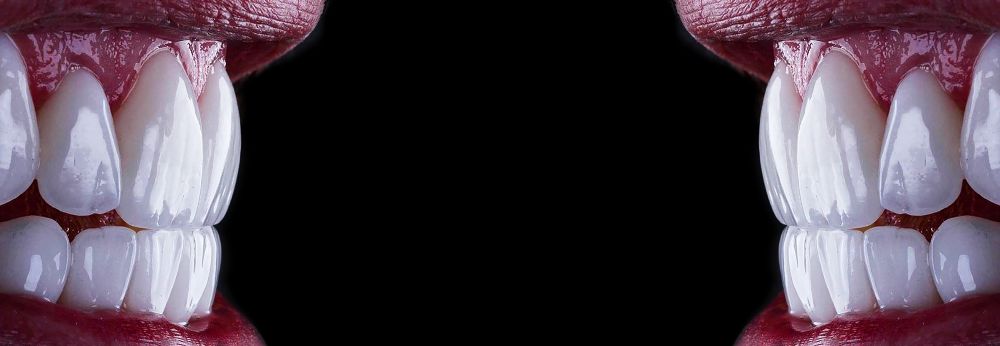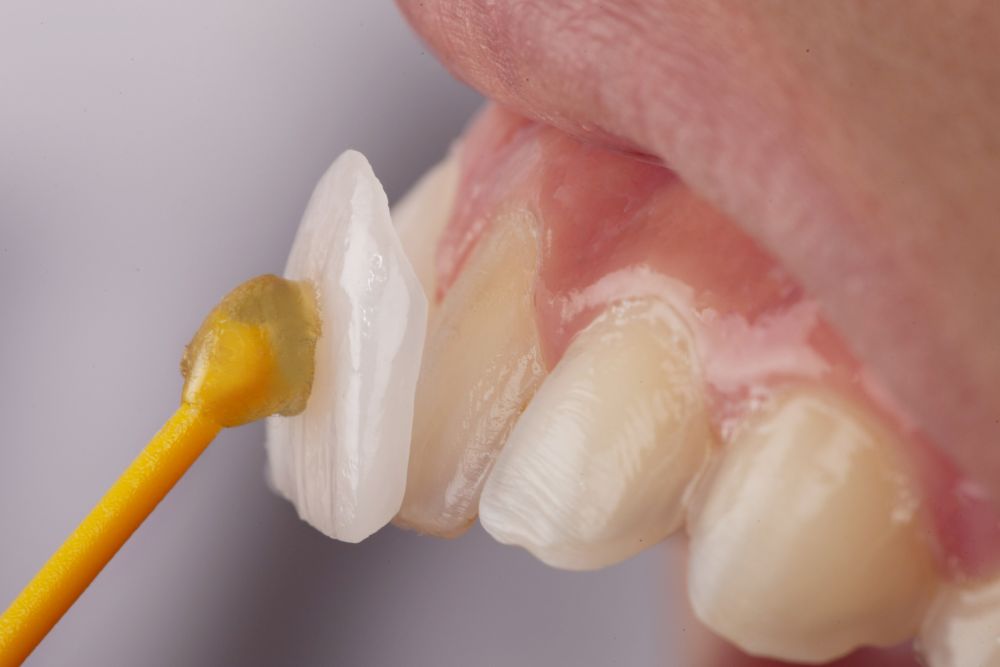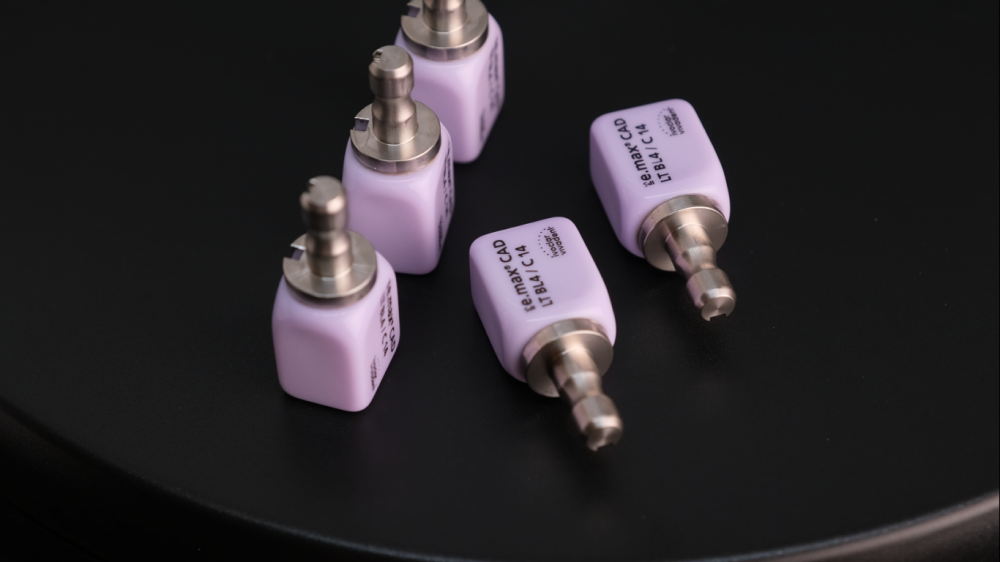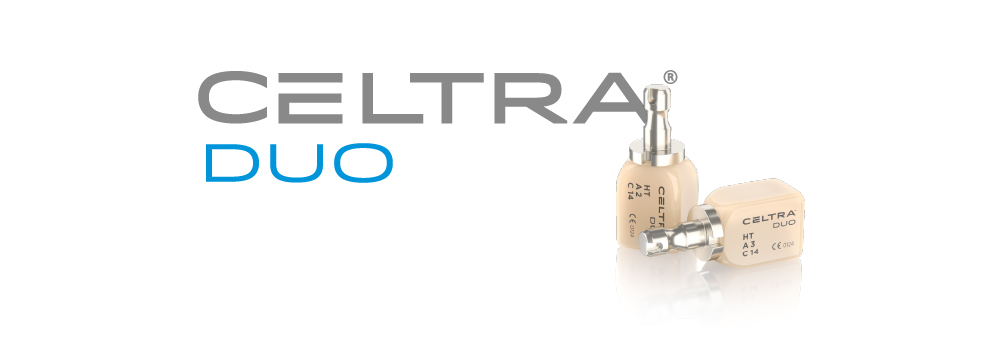INTRODUCTION
Laminate veneers, also known as dental veneers, are a popular dental solution that has revolutionized the way people approach dental issues. These thin layers of porcelain or composite resin are placed on the front surface of teeth and are used to improve their appearance and functionality. Laminate veneers are a cosmetic dentistry procedure that has become increasingly popular over the years, with more and more people opting for this procedure to enhance their smiles. In this article, we will provide you with a comprehensive guide on laminate veneers, including what they are, the benefits of this procedure, the different types of veneers, the cost, the procedure, and more.

WHAT ARE LAMINATE VENEERS?
Laminate veneers are thin, custom-made shells designed to cover the front surface of teeth to improve their appearance. They are used to correct various dental issues, such as discoloured teeth, chipped or broken teeth, misaligned teeth, and gaps between teeth. Veneers can be made from either porcelain or composite resin, with each having its own benefits and drawbacks. Porcelain veneers are more durable and stain-resistant and offer a more natural look than composite resin veneers, which are less expensive and can be completed in a single dental visit.

BENEFITS OF LAMINATE VENEERS
- Improved appearance: Veneers can instantly brighten and straighten your smile.
- Long-lasting: With proper care, veneers can last 1015 years.
- Stain-resistant: Porcelain veneers resist stains from coffee, tea, and tobacco.
- Minimal tooth reduction: Less invasive than many alternatives.
- Versatile: Corrects chips, cracks, misalignment, and gaps.
TYPES OF LAMINATE VENEERS
Porcelain Veneers
Thin custom shells bonded to the front of the tooth. Durable and highly stain-resistant; typically require more than one visit.
Composite Resin Veneers
Tooth-coloured material bonded directly to the tooth. Can be completed in one visit; less durable than porcelain and may need more frequent replacement.
THE COST OF LAMINATE VENEERS
Costs vary by veneer type, clinic location, and dentist experience. Porcelain veneers often range from $1000$2500 per tooth; composite resin veneers from $250$1500 per tooth. Most insurance plans do not cover cosmetic veneers.
THE PROCEDURE
The process typically includes three steps:
Consultation
Examination, X-rays, discussion of goals, and impressions if needed.
Preparation
Removal of a thin enamel layer to make room for veneers; final impressions are sent to the lab.
Placement
Custom veneers are tried in, adjusted, bonded with dental adhesive, and polished for a natural finish.

WHAT ARE THE BENEFITS OF LAMINATE VENEERS?
- Improved appearance: Corrects discoloration, chips, cracks, and gaps.
- Minimal tooth reduction: Preserves more natural tooth structure.
- Durable: Strong porcelain or composite materials withstand daily use.
- Stain-resistant: Less prone to discoloration over time.
- Easy to maintain: Care with routine brushing, flossing, and check-ups.
ARE THERE ANY RISKS OR DRAWBACKS?
- Sensitivity: Temporary sensitivity may occur after enamel reduction.
- Cost: Typically higher than whitening or bonding.
- Irreversibility: Enamel removal is permanent; ongoing maintenance is required.
- Maintenance habits: Avoid hard/sticky foods and do not use teeth as tools.
HOW LONG DO LAMINATE VENEERS LAST?
With proper care, laminate veneers commonly last 1015 years or longer. Longevity depends on oral hygiene, habits, and parafunction (e.g., grinding). Damaged veneers can be replaced to restore your smile.
CONCLUSION
Laminate veneers are an effective, minimally invasive option for elevating your smileaddressing discoloration, chips, cracks, and gaps with natural-looking results.
Good oral hygiene, regular check-ups, and avoiding excessive biting forces help veneers last many years. Do not use your teeth to open packages or bite hard objects.
If you experience issues such as chipping or cracking, contact your dentist promptly for assessment and repair or replacement.
Frequently Asked Questions (FAQs)
What are veneers?
Veneers are very thin layers of ceramic that are precisely made to fit over the front surface of a tooth, used to improve the appearance of teeth and correct minor imperfections such as chipped, cracked, stained, misaligned or uneven teeth.
What is the difference between veneers and Lumineers?
Lumineers are a brand of veneers made of Cerinate ceramic which is ultra-thin and eliminates the need for drilling or injections. However, they don't last as long as traditional veneers and are not as effective at hiding severely stained or damaged teeth.
What are the benefits of veneers?
Veneers have multiple benefits, including being customisable, resistant to stains, gum-friendly, long-lasting, fixing discoloured teeth from root canal treatments, giving a natural look under fluorescent light and flash photography, and requiring minimal preparation of teeth and no extra maintenance.
What is the procedure for getting veneers?
The procedure for getting veneers involves a clinical examination, administering a local anaesthetic, preparing the tooth, taking an impression, placing a temporary veneer, checking the fitting, final adjustments, polishing, and permanent fixing of the veneer. One or two extra appointments might be needed for perfect fitting.
Is the procedure for Lumineers different from that of traditional veneers?
The procedure for Lumineers is less invasive and requires less preparation of the tooth compared to traditional veneers, and does not require temporary veneers to be put on while waiting for the custom Lumineers. Additionally, local anaesthetic is not necessary for Lumineers.
What are veneers made of?
Veneers are very thin layers of ceramic that are custom-made to fit over the front surface of a tooth.
Can veneers correct multiple dental imperfections at once?
Yes, veneers can correct minor imperfections such as chipped, cracked, stained, misaligned or uneven teeth, and can also address concerns about spacing or crowding.
How long do veneers last?
Veneers can last up to 15-20 years before needing replacement.
Are there any special precautions to take after getting veneers?
No, veneers don't require extra maintenance, you only need to brush your teeth as you would normally.
Is the placement of veneers a painful process?
The placement of veneers may involve the administration of local anaesthetic, however, the process is minimally invasive and not painful. The specific type of veneer called Lumineers can be placed without the need for drilling or injections for local anaesthetic.
Can veneers fix a gap between my front teeth?
Absolutely! Veneers can be used to address issues with spacing and crowding, so if you have a gap between your front teeth, veneers may be a great solution for you.
Can I eat whatever I want with veneers?
While veneers are strong and durable, it's still best to avoid hard and sticky foods to ensure their longevity. Maintaining good oral hygiene and avoiding excessive biting forces will also help your veneers last longer.
Can veneers make my teeth look fake?
Veneers are custom-made to match the size and colour of your natural teeth, so the goal is to make it difficult to tell the difference between your natural teeth and the veneer. With the right shade matching and a skilled dental professional, your veneers should look natural and not fake.
Do I need to get all of my teeth veneered?
No, you can get veneers on just a few teeth or as many teeth as you would like. The decision on how many teeth to veneer is ultimately up to you and your dentist, who will consider your cosmetic goals and budget.
Will my veneers affect my ability to eat and speak normally?
No, veneers are thin layers of ceramic that are bonded to the front of your teeth, so they should not affect your ability to eat or speak normally. Some patients may experience a slight adjustment period when first getting veneers, but this is typically short-lived and minor.









